#biome post
Explore tagged Tumblr posts
Text

(Here you go, sorry for the wait lol)
-------
Surrounding the Middle Temperocene continent of South Ecatoria, the small, pelagic islands off its coasts have become the hotspots of unusual and remarkable evolutionary forms. Here species arrived either from being cut off from the mainland, rafting on debris in storms, or travelling there upon their own accord: and in isolation they have been morphed by time and natural selection into unique species found nowhere else on the planet.

Reef Ridge Isle, to the continent's northeast, is as its name implies: a sandy landmass north of the North Bridge Reef with parts of old dead coral exoskeletons that extend above the surface to form a landmass that, in some areas, piled up with white sand--the eroded remains of old coral chewed, processed and excreted by a wide array of coral eaters over countless millions of years-- and other sediments, upon which plants have taken root, delivered by the droppings of ratbats and pterodents.
These plants are fed upon by one rather unlikely and unexpected grazer: the insular giant landshrab (Megalocarcinocaris giganteus). Largest of the terrestrial shrish, this slow-moving, primarily-herbivorous species lives entirely on land as an adult, with other members of its genus widespread well across the mainland and the surrounding islands thanks to the manner in which they reproduce. While land-dwellers as adults, they return to water to breed, releasing thousands of planktonic young that drift into the sea far and wide, eventually seeking out islands and shores as they mature and moving onto land once molted into miniature adults. The insular giant landshrab, however, has become a distinct species, as it prefers to spawn in tide pools, where its young are well-protected. They bear smaller clutches, but larger and more-developed young, which, with their secluded upbringing, have become reproductively isolated from the other seafaring species of landshrabs.
The beaches and shores of this island, in the meantime, have become the rookeries of another unique endemic species, the ridgeland gnawrus (Macrootariimys dimorphis), an omnivorous bayver that gathers here in great numbers to rest, breed, and birth their pups. Most distinctively, males can grow up to thrice as large as females, and sport powerful incisors and canine-like first molars: useful for both feeding on a wide array of food like shrish, shrabs, bivalves and even marine plants on occasion, and also for fighting rival males to score breeding rights to harems of receptive females. This aggressive dominance-based hierarchy is the reason behind their marked dimorphism, as the larger males held an advantage when it came to battling for mates and territory, pushing smaller, weaker males to the fringes of the colony where they are both more exposed to predation by phorcas and have lesser reproductive success: factors that heavily skew the sex ratio of the adult gnawrus population toward fewer males and more numerous females.
Smaller species live on the island as well. In the absence of typical "basic rodents" such as furbils and duskmice, a small, flight-inhibited ratbat, the ridge rockbat (Micropteronyctus coralinsulus), fills their niche instead, scurrying about on the ground to feed on seeds, roots, tender shoots and small invertebrates, being a poor and infrequent flier that spends most of its time on the ground seeking cover underneath dense vegetation. A small rattile lives here too: the reef ridge rafter (Insulosauromys coralis), which roams the coasts of the island during dusk and dawn, feeding on insects and other small arthropods. Able to float on water thanks to microscopic hairs on its underside that make it nearly completely waterproof, holdovers from its ancestors that lived in the rainy, flood-prone jungles of South Ecatoria, a lucky few survived being washed out to sea and made it to the island by floating there, either on their own accord or hitching a ride on driftwood or beachpeach fruit, a small percent arriving just in time before they succumbed to dehydration or predation.

But rafting is not the only way for a rattile to settle onto a secluded island where they can evolve in isolation. On the Strait Isle, east of South Ecatoria, some have done so in a perhaps unexpected manner: they flew there.
On the forest floors of the island, the thorny quilldrake (Echinopteromys stridulus) roams the leaf litter, searching for the abundant small invertebrates that it eats. It would otherwise be a typical rattile at first glance, save for four spiny appendages on its back that in males, are rubbed together to produce high-pitched noises: a feature that betrays its ancestry as a flightless wingle that had emerged independently from the nephtiles of Isla de Oof.
Unlike the nephtiles, however, the flightless wingles of Strait Isle have remained small and inconspicuous, and no longer produce a flighted juvenile stage. Their wings, modified hair attached to muscular knobs, have been reduced to small keratinous spikes, as is the case with the ground spurwing (Apterasauromys rotundus), a burrowing herbivore that uses its moveable spikes as defensive structures when the solitary creatures tussle against their own species over territory and food.
The forest floor, in the meantime, is teeming with more unusual creatures: golden miteshrabs (Aurocarcinocaris minimus), tiny land shrabs that time their breeding cycles to the high tides as they, like the giant landshrabs of Reef Ridge, are terrestrial crustaceans that still return to sea to breed. They swarm along the ground by the thousands, even millions, carpeting the forest floors and beaches in a bright yellow mass of moving bodies migrating oceanward. Such conspicuous gatherings draw the attention of many predators, such as quilldrakes as well as seagoing ratbats and shore-living skwoids, but, numbering in such quantities, the proportion consumed by predators scarcely even dents their teeming numbers.
The isle's most remarkable and intriguing inhabitant, however, is perhaps the muddy fudgeback (Amphibiocheloimys pterapus), a member of a group of marine shingles known as the sterapins. Uniquely among its clade, which are fully-aquatic as they give birth to live young, the fudgeback retains the ability to haul itself ashore and bask in the warm suns' rays, its dark coloration helping it raise its temperature quicker at such a cool southern latitude. Feeding on mockjellies and sea plants as adults, the young are conversely carnivorous to fuel their rapid growth, and their ability to clamber onto land enables the juveniles to pursue and feast upon the abundance of golden miteshrabs whenever they migrate to the seashore.

North of the mainland is the Peachland Isle: a small landmass once connected to the mainland that broke off at least a few million years ago. As such, most of its species, as recent divergences, still resemble the species of the northern beachpeach forests, yet are still recognizable as their own distinct species.
The entire landmass is basically covered in beachpeach forest, and thus its residents are ones specialized for a mix of the aquatic and arboreal. Present here are the sunkeys, specifically the yellow sunkey (Xanthaquapithecomys insularis), living in social groups that forage in the water for aquatic plants, beachpeach fruit and marine invertebrates, and retreat into the canopy of the overhanging branches to seek safety from occasional transient predators such as bayvers and cricetaceans that sometimes visit the flooded forests. Similarly adapted is the peachland tree rodder (Arbolutromys leptopus), which can climb up the trunks of the beachpeach to rest safely for the evening. They coexist quite amicably with the sunkeys due to them being specialized eaters of quillnobs and other marine gastropods and thus competing very little over food, though during the breeding season when the sunkeys become more territorial the tree rodders are often bullied away by their otherwise usually placid neighbors, and thus wisely learn to keep their distance during this time.
Meanwhile, inching along the branches of the canopy trees is the green beachpeach piedviper (Arbophiosauromys viridans), a burrowurm that much like the sunkeys and tree rodders lives a double life as both tree-climber and semi-aquatic swimmer, equipped with both hooked limbs and tail for clinging onto branches, and a long, flexible body that can undulate smoothly to propel it through the water. Most piedvipers are insectivores, and in this case it plays a similar niche in a very different ecosystem: its diet consists of peachroot mermites (Myrmecocaris spp.). These colonial shrish live among the root systems of the beachpeach trees, and even excavate tunnels in the wood with their claws to build shelters in the roots where their egg-laying queens can reside. The green beachpeach piedviper, while resting amidst the treetops most of the time, descends into the water to feed on the mermites, providing an important service in keeping the mermites under control lest they damage the roots too much and harm, weaken or even kill the host tree.

And furthest east to the mainland is the peculiar Isla Pterodens: an atoll composed of a circular volcanic landmass surrounding a shallow central lagoon. This lagoon is teeming with life where photosynthetic algae grow in abundance and small shrish and pescopods gather in large shoals to seek refuge from deeper-water predators: eventually bringing about one of the most remarkable phenomena of evolution illustrating both its resilience and also its limitations.
Titan prunejaws (Titanopteromys thanotherium), notable for their wrinkled, ridged and brightly-colored lower wattle found on the males as a sexual display, are one of the heaviest of the flying pterodents, and range around the southern coasts of the mainland, primarily feeding on small aquatic prey but also being drawn to beached carrion of dead marine animals, being opportunistic scavengers as well when such a calorie-rich meal presents itself. Due to their weight and laborious takeoff, flight is an energy-intensive effort that remained due to its payoff in allowing the prunejaw to find food and escape danger: which makes it perhaps rather unsurprising that, upon settling onto Isla Pterodens, the prunejaws very quickly abandoned flight in just a few generations when presented with a productive land, with no terrestrial enemies, where they could simply wade through the lagoon and easily forage in the abundance, becoming the insular subspecies known as the inevitable prunejaw (T. thanotherium invictus).
And inevitable indeed they seem, for, prior to their current colonization in the last few hundred thousand years, the atoll of Isla Pterodens had completely sunk beneath the waves during warmer periods of decreased glaciation and elevated sea levels. Their idyllic paradise now an inescapable death trap, the now-flightless prunejaws were unable to escape the demise of their home, and quickly became extinct...at least, for the time being.
In the fluctuating sea levels of the Temperocene, as the polar ice caps expand and recede, the atoll had since submerged, and subsequently, re-emerged, at least several times in relatively recent history, within the span of a couple million years. And each time, as its productive shallow lagoons became ever so suitable, nearly tempting, to the prunejaws, they repeatedly came to settle here, became flightless to conserve energy and resources, and invariably perished when the landmass disappeared into the sea. Evolution, devoid of a goal, had cyclically doomed a small population to repeated extinction in its haste to remove an ability no longer currently useful, without the foresight of it becoming advantageous in a later ecological change. And yet, in seeming display of what could almost be called stubborness, the same species landed upon the same atoll and became the same thing that had lived and died there not too long ago: perhaps again and again for as long that the island's empty niche, and the species built to fill it, continue to exist across the span of deep time. The inevitable prunejaw is but the latest iteration in a series of evolutionary experiments that serve as examples to highlight the absence of any direction to evolution's random progression-- save for whoever or whatever is just 'good enough' to survive in the moment.
---------
#speculative evolution#speculative biology#speculative zoology#spec evo#hamster's paradise#biome post
60 notes
·
View notes
Text
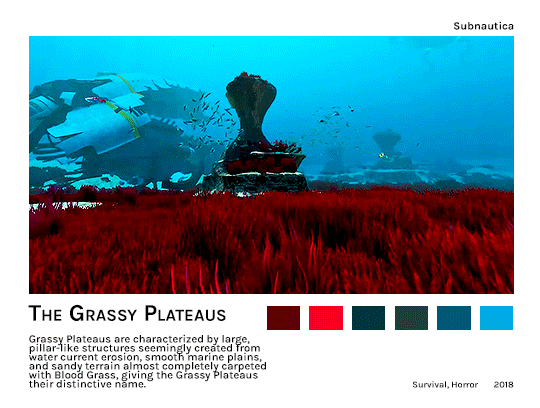
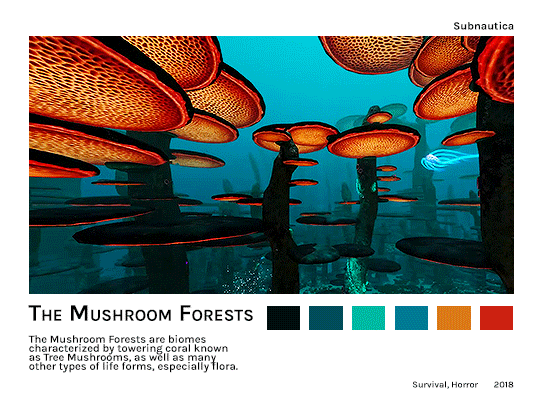
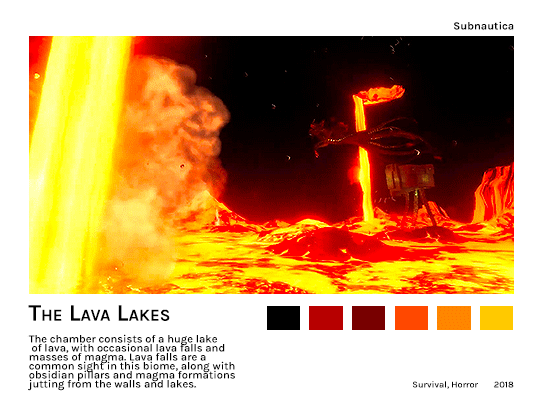
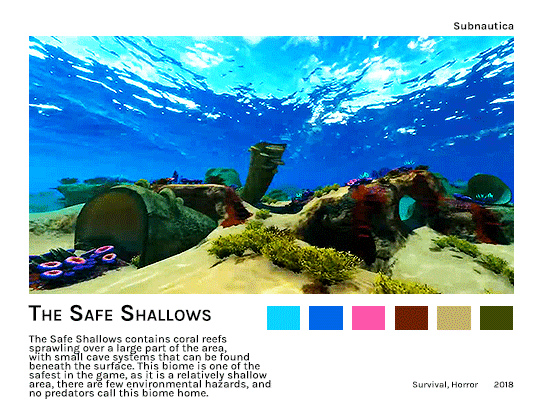
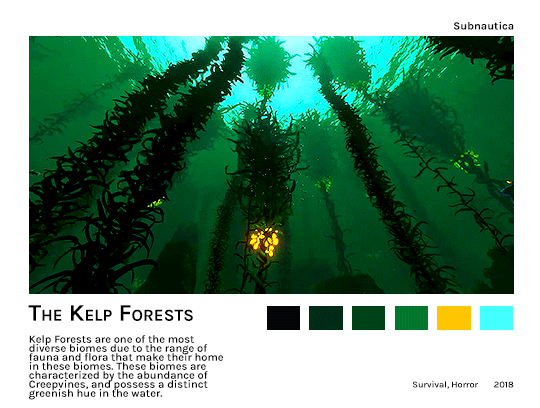

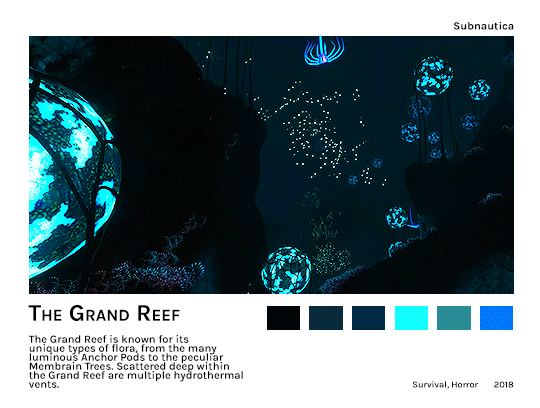
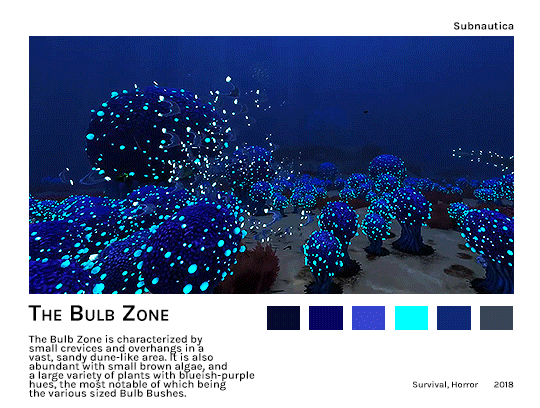
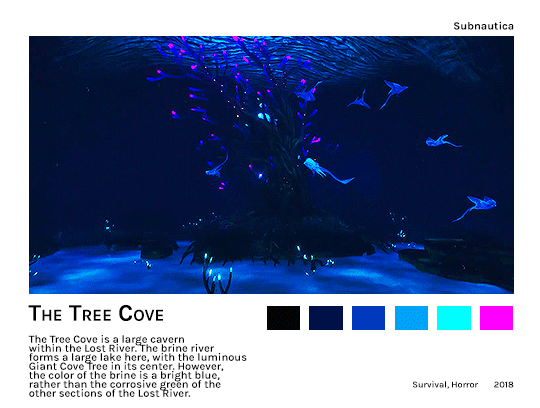
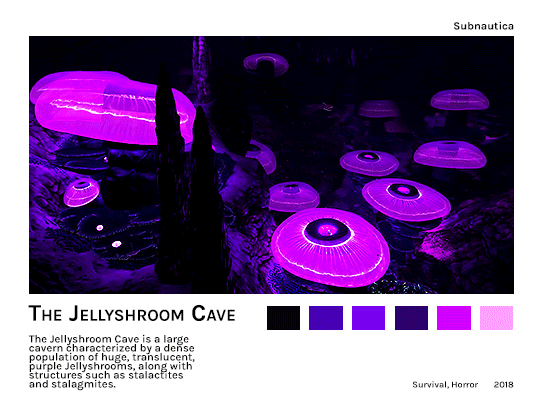
@pscentral event 37: color challenge (insp • template)
↪ the biomes of subnautica (2018) | dev. unknown worlds
#*#gamingedit#subnauticaedit#videogameedit#subnautica#pscentral#dailygaming#singinprincess#carolook#userbunneis#tw thalassophobia#the game is so pretty yet so terrifying#long post#tree cove technically not a separate biome but it was too pretty to leave out#gamingscenery
899 notes
·
View notes
Text
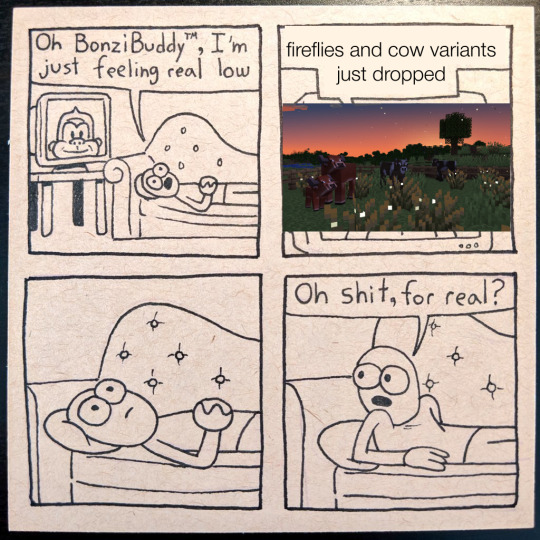
#and also ambient biome sounds but that hard o share in uh. an image post#minecraft#minecraft snapshot#the least amount of effort i've put in a meme i think#original comic by cooltimesonline but they deactivated </3
924 notes
·
View notes
Text
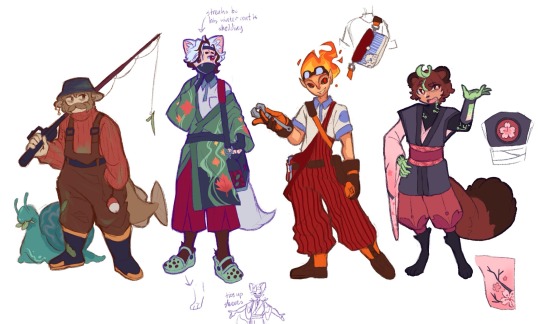
more dweebs (Very detailed image description below.)
a drawing of grian, ethoslab, tangotek, and smallishbeans. grian is in his season 10 fishing skin and the rest are in different outfits referencing their base themes.
grian is in his fishing skin looking very tired with his fishing rod swung over his shoulder and an ear pierced with a brassy fish hook. he’s a cod hybrid with fin-ears and a stubby tail. behind him blue snail is munching on some leaves.
etho is posing with a neck sheepishly behind his neck and the other resting on his bag. he’s in the postal uniform polo with a green, canadian maple-themed yukata loosely worn and slipping off his shoulder. he has fingerless gloves on under. he is wearing dark red pleated pants and light green heeled crocs. he has a black and red messenger bag with a trellis motif. etho is an arctic fox hybrid with brown legs and streaks through his hair. doodles below show what his paws look like under the crocs and one shows him posing with a note saying “ties up sleeves.” above him another note reads “streaks bc his winter coat is shedding.”
tango is posing confidently with a wrench. he is in the postal uniform polo, with chunky brown and orange gloves and boots, topped off with red, pinstriped overalls. one strap is not around his shoulder, and on the belt around the overalls they carry a small bag, a screwdriver, and a vial of redstone. he has on brown goggles with blue lenses. tango has fire for hair and pointed ears. above him there’s a doodle of the messenger bag that’s secured on his back. it shows how the orange straps tuck over the whole outfit and lead to a dark red and pinstripe blue bag with cog detailing.
joel is giving an indignant pose like he’s complaining. he is wearing a black undershirt that fades out into his light green claws, a pink kimono with only one sleeve of cherry blossom patterns, and a dark grey vest and cherry blossom-patterned obi tie it off. the vest has a cherry blossom crest on the back. joel also has on dark pink pants with a cherry blossom motif on the bottom and on his left arm there’s a bracer with a screen built in. crawling all over the undershirt there are cybernetic patterns connecting joel’s skin through to the undershirt. joel is a tanuki, hence why he has a leaf on his head. around joel are doodles showing the crest on the back of his vest and the pattern on the sleeve.
#hermitcraft#grian#ethoslab#tangotek#smallishbeans#art archive#image id in alt text#LORD okay another set done#i’ll post the mail team together at some point but i wonder if you can figure out what their uniform is :)#uhhhhh tanuki joel is Directly from#melloz heist#maybe i’ll make a doodle comic later#but bc etho is in such a warm biome his winter coat is shedding#so he’s a lil brown#didn’t draw it but the base of his tail is also brown#ik bird grian is popular#but i think a cod fishman fishing is way funnier#oh and the cherry blossom theme with joel is 1) cherry magic mountain and 2) lizzie pink :)
817 notes
·
View notes
Text
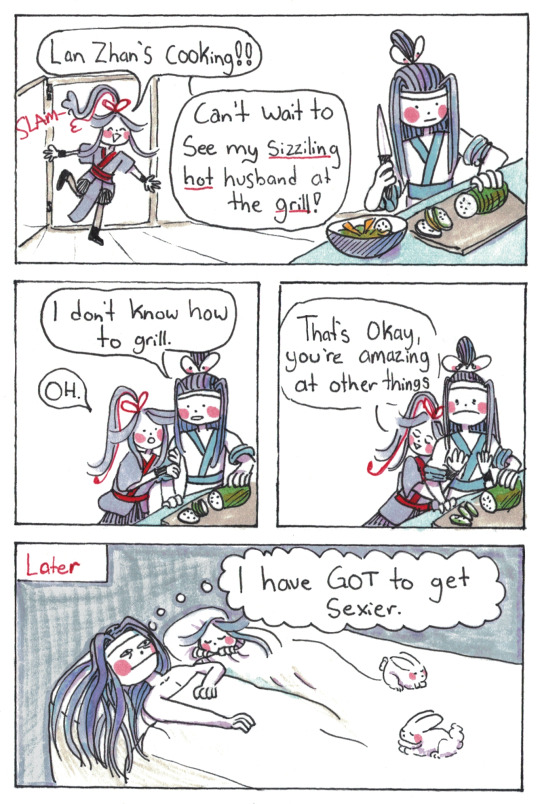
There's nothing he can't do. Yet.
(Thank you to everyone who participated in the poll!)
#poorly drawn mdzs#mdzs#wei wuxian#lan wangji#bonus comic#This whole poll and comic is very inspired by a convo I had with qourmet in one of their art streams.#namely that the Art Of Grilling is a powerful skill separate from cooking.#I've also been inspired by said convo to try and learn how to grill. What's the point of having a garden if I can't grill my summer squash?#Anyways. I hope this appeases the crowd that has been in arms about the prev prev poll.#I don't think teenji can cook. I think lan wangji is just very good at dedicating himself to whatever craft he needs to pick up.#give him a day and he will be a grill dad#the most powerful beast of the summer lawn biome.#Until then he will lie awake at night. Haunted by this inadequacy. He's just like me for real (chronic perfectionist).#I think this is the first domestic wangxian post i've made. God I'm so sorry wangxian fans.#wwx could not care *less* abt lwj having flaws. I think thats the beauty of this relationship. they *know* about each other's flaws FIRST.#Love each people *because* of the flaws - not despite them (thats my unsolicited advice for the day).#also if you noticed my medium gray marker slowly giving out...today it finally died on me....
2K notes
·
View notes
Text
I... am haunted? By my Midi-chlorian theory?
Cause they are PROBABLY? Some sort of Symbiotic Bacteria?
Which was my theory. Cause "micro-organisms" is vague af? And doesn't exactly tell us what KIND? But it's probably not a mammal or some sort of fish? So like... helpful blood bacteria. Got it! No different then a good gut biome. Makes perfect sense!
Yeah, THIS one has? For some reason? A hyper sensitivity to fundamental forces of reality? But I mean? Monkeys with type writers, right? Something, somewhere, was bound to get it. Some organisms get better smell to survive, some get sensitive whiskers. The blood bacteria got jacked in to Reality's newsreel. Some low ranking admin privileges.
Still? Needs a HOST to survive though. Doesn't, itself, even really HAVE a brain.
Cause it's a Bacteria.
A Bacteria and... and Bacteria can be multiplied. Grown. Obviously? Midi-chlorians refuse to do so outside of a living body. Or the Sith and various other researchers, bother ethical and UNETHICAL, would have figured out how to crack Midi-chlorian development.
They ALSO? We can only assume? DO NOT mix. As in? Any Midi-chlorian's? Removed from the Original Host™ die off pretty promptly. (In time with the blood rotting or new body assimilating the fresh, donated, blood.) So you presumably, couldn't take from, say, Skywalker and give to an average farmer, and have that farmer become mildly force sensitive.
Even THOUGH? The BLOOD? Is where his Midi-chlorians are! So PRESUMABLY? So long as he and the farmer had compatible blood types? That SHOULD happen! Because Anikin his a SHIT TON of Midi-chlorian bacteria in his blood and the farmer would be receiving some of that High Production Strain.
Not saying the farmer would ever become a powerhouse. But? There should? Be a difference? Even if it was only temporarily.
Yet? It seems? Like Midi-chlorian strains? Just don't MIX. They split off, during development of a child, begin cultivation of their own unique colony, and never again! Shall the stains blend. I'd go so far? As to say? They probably ATTACK other Midi-chlorians in THEIR space.
Like part of the immune system. Disease, poison, parasites, and of course? Those filthy, FILTHY Other Midi-chlorian Colonies trying to encroach upon THEIR resources. Get! GET!
Which is where? All past attempts have FAILED. Because they? Had an END GOAL first, and they worked their way backwards. Approached it all with either preconceived notions or complete derision of the subject matter. Ignoring countless culture's collective MILLENNIUMS of knowledge on the subject. The observations. The notes. The folk remedies and early sciences.
Arrogant. Forgetting or outright dismissing. Because THEY were better. THEY were SMARTER. Surely, THEY would crack the code! Unlock the SECRETS of this MYSTICAL building block of the Force!
Achieve... POWER.
But? The thing IS? Primitive? Does not and HAS not? Ever meant stupid. It means young. New. Doctors and scientists, doing the best they could, with what they had. To help as many as they could. The Force? It was a mysterious thing. They knew the shape of it. The edges, but not it's depths. They could observe.
If they did X... Y occurred. Medicine A? Brought about B and C side effects, avoid it going forward. Use Medicine D. So forth and so on. Building upon the knowledge of the past.
But OH, THEY? Didn't have fancy modern medical technology! Didn't know the modern terms! So obviously they were superstitious idiots!
Thus, attempt after attempt. Failed. Usually with innocent people, paying the price. Because Power. Because Fame. Because they could rule the galaxy and go down in history books... if only these simple little bacteria would COOPERATE. But.... they don't. Do they?
Because you lack understanding.
You. Can Not. Remove Them. From The. HOST.
They DIE.
They can exsist in exactly ONE(1) environment. Their NATIVE environment. Where you found them? That's where they need to STAY. If you found them in a tree? The need to stay in THAT specific tree. Dirt? Well then! Dirt from THAT specific region of THAT specific PLANET. No moving! Cease! Desist!
Are the Midi-chlorians in a baby? The start up strains were donated! Congrats! THEY LIVE THERE NOW. They are now NATIVE to the BABY. Can not exsist OUTSIDE the baby! In fact, will immediately begin to die! Outside that baby!
This is WHY Sith Alchemy is so fucked up. Lots of live experimentation and forcing Midi-chlorians into statis. Body horror everywhere. No mas! It DOES NOT SPARK JOY.
Which?! That leads me to my point! The part of all this THAT FUCKING HAUNTS ME!!!
Bacteria can be multiplied if you give it the right food. Fuck, it WANTS to multiple. WANTS to go gangbusters. Just? Absolutely apeshit. Thick enough in the blood to turn it all into PASTE. It doesn't have a brain. It can't look around and think to itself "hey, maybe we should slow down, we're straining the environment".
It's bacteria. Ultimately, in the end, JUST Bacteria.
Yes, it may be the medium by which we connect to The Force... but IT itself? Has no intelligence to negotiate with. Just like the cells in your body. And JUST like the cells in your body? It can be a cancer. Could kill you, if something went wrong.
If SOMEONE, deliberately, made things go wrong.
All in the name of "Science".
Yes, once again, I consider the SI-OC, even as I consider Midi-chlorians themselves. What "feeds" such a bacteria? A healthy body, presumably. Connection to the Force? Kyber, most likely. Force powerful items. We know they "call" to those who are Sensitive. But! As we know? The part of your body that can actually FEEL that call? Is the Midi-chlorians in your blood, which then transfers the information to it's host.
It is the Midi-chlorians that want that specific Force object. In all likelihood, because it benefits them. That it benefits you? Is a lovely side effect. That is can be used for things? Neat! Good on you for figuring that out! It would still call you to collect pretty, shining, rocks, even if you couldn't use Kyber for SHIT. You would be COMPELLED.
NEED it.
It makes the Midi-chlorians inside you go Brrrrr. Mmm, yes, happy chemicals. Positive reinforcement! You should continue to do OTHER things that help the Midi-chlorians! Like meditation, eating well, and being around others! Go on! Hug that baby! Yeeeeeah, good energy makes LOTS of Midi-chlorian food! (Bad energy too. We are not picky. But that Does Not Feel Nice. So like.... why tho?)
So! Consider!
You have yourself an UNETHICAL AF scientist. The Board does NOT UNDERSTAND THEIR GENIUS etc etc. They have completely lost their shit. Unfortunately, they have money. And Slavery and desperation abound. There are ugly, UGLY pockets of darkness in this galaxy.
They? Have An Idea™! (It is a terrible, horrifying idea)
This scientist? Is going to crack the Secrets of The Midi-chlorian! Become Famous! It is a plot heard many times before, sadly. Just as sadly? SI-OC's parents, who were on their way to the temple, never make it there. Make no mistake! Good people. Upset, of course, that they will be losing their daughter. But? As all good parents do?
They made the decision they thought was best for their baby girl. A lifetime of being understood. Supported. Of stable food and safe beds. A good, quality education they would never be able to afford. Being able to help people someday. They love their daughter. Weep for losing her. But sometimes? Loving your child? Means letting them go.
Not forgotten. NEVER forgotten. But somewhere better then they could ever give her. Safe from those who would see their child in chains.
They do not make it.
But they do not go quietly. When those bastards come for their little girl. They make it cost dearly. Not dearly enough. Never, ever, enough. But one of the other passengers is able to get off the emergency beacon. So the Jedi will know. They will come.
It... it has to be... enough...
And it is.
And they do.
But it is not just a pirate attack. Not JUST slavers. No... no this is far more horrifying. Far worse indeed. The Shadow sent to rescue the child? Stumbles into a festering shitshow. The sort that takes a TEAM to unravel. The not-pirates are mercenaries, are closing in fast. He send his data in full, in one big lump as an emergency download.
Capture likely eminent. They're experimenting on Force Sensitives. Need Back Up.
Help.
The Doctor is, of course, DELIGHTED! An adult specimen AND a child! Comparisons and contrasts! They ramble on, unhinged, to the horror of the Shadow. Who's eyes are locked on the Crecheling in a cage. He knows help will come... but will it come fast enough?
No. Not really.
But what keeps HIM from falling? Is the Crecheling that needs to be taught. Ironic, in a way, that the very thing their capture demands and demands? Is what helps them escape, however temporarily, their cages. Meditate. They are told. Or else.
Surrounded by stolen artifacts of Light.
Meditate.
Meditate.
Imagine, if you will, a dialysis machine. It filters the blood, yes? Pumps it outside the body? A terrible process. Trial and error. How far is too far? At what distance, do the midi-chlorians begin to die? The doctor kills... so, SO many innocent. Not their prize specimens. Jedi are hard to get! But slaves? Easy enough.
The Shadow can not Fall, he reminds himself. Can not give in to his grief or rage. His horror, his sorrow. It... it is so hard. To remember the Light. In this dark place. But the Crechling helps. The kyber, the artifacts. When... not... Not IF! But WHEN he gets out of here? He thinks... he thinks he should retire. Being a Creche Master sounds lovely, to be honest.
Bright. Peaceful.
The doctor completes their horror machine. He can not stop them from putting on SI-OC. After all... HE is done growing. It filters the blood, you see. Nice and close to the body. Through and around Force rich materials, in medical grade tubing. Exposing the Midi-chlorians directly to the energy they feed off of. Filter in a mineral solution to use as building blocks.
It WORKS.
The midi-chlorians in SI-OC blood start multiplying far faster and too far greater concentration then ever before. Slowly but surely boosting their Force Sensitivity as they go. What a rousing success.
If it weren't slowly killing SI-OC.
Ever imagine? What would happen if someone reached over and slowly started turning up the sensitivity on your eyesight? Your hearing? Your taste, touch, the FEELING OF YOUR BONES? If every breath was sandpaper, and every thought an adrenaline rush?
Could you imagine? FEELING the galaxy BREATHE? Knowing for a fact that your body had been specially designed for a certain level of sensitivity? And you had been broken? Because someone wanted to see if you could handle HIGHER?
Power without the support structure? Burns everything down.
Just because something CAN be done? Doesn't mean it will work the way you fantasize it will. Reality is not a story book. Where Power comes in pretty little packages, to be bought or sold or stolen. Midi-chlorians were always Bacteria. And trying to fuck with your own micro-biomes for more power? Was always destined to end in death and disease.
For you. For someone else. For every innocent you dragged into it.
They scoffed at the "primitive" scholars who warned not to fuck with it, yet still treat it like its a mystical power to be seized.
The Shadows that finally track down the lab? BURN it wil a VENGEANCE. It is a place of horrors. And initiate SI-OC is very, VERY sick. They aren't even sure they can risk taking her to Coruscant. Too many people. Jedha? Probably safer. Luckily their library has something that...? MIGHT? Be able to help treat this?
SI-OC probably never stops Tasting Time™ and seeing the Pretty Colors™ but? At least she becomes? Largely functional? Probably needs a disability animal. One that's mildly force sensitive, so it knows when she's ~~drifting~~ again. Keep her from walking into traffic or off a landing platform.
The random bouts of prophecy and mind reading are a bit disconcerting, but like? Lay off! It's not SI-OC fault! Be nice! She can't help it! Don't be rude! D:< she basicly has tiny Force Nexus in HER BLOOD. So WHAT if she occasionally stops to admire a sunrise that hasn't existed for thousands of years? It's probably pretty!
The younglings? Very understanding. Adults are a bit creeped out. But like? Eh. Just EXTRA Jedi-y Jedi... they guess? (No, no not really. This one had a serious Force Incident. But like FUCK we're breaking rank to tell outsiders that sooooo..... Sure? Yeah. Let's go with that!)
Ironically? I bet? Anikin gets along great with her? They're team "WHY YES, THE FORCE IS VERY LOUD. WHY ARE WE SHOUTING? SO YOU CAN HEAR US! OVER THE FORCE! WHAT DO YOU MEAN IT'S NOT THAT LOU-?". He got it naturally, she got it by getting fucked over. But? They can both go?
"Hey, you feel that thingy in the-?" *vague hand motion* and get a "oh YEAH! Wonder what's THAT'S about?". Does anyone else feel it? No. Is it obvious to THEM? Yes.
Will Anikin punch your lights out, if you mock his disabled friend? *boss music starts playing* R U N. Padme would help. Tag team, fuckeeeeer! *from the highbar with a steel chair*
Community is EVERYTHING. And sometimes? It's you, your secret wife, your brother-mentor-dad, the Clone army you adopted, and the perpetually Force High/Vaguely Brain Damaged jedi you call your best friend! And the droids. And your secret wife's body gaurd squad. And the younglings your friend-... actually? You know what? Your family's kinda big.
Awesome :)
@legitimatesatanspawn @babbling-babull @spidori @hdgnj @hypewinter @leftnotright @the-witchhunter @lolottes @mayfay
#minji's writing#midi chlorians#Midi-chlorians theories#si-oc#star wars prompt#minji's ocs#Midi-chlorian theory au#dont fuck with your micro biome kids#its not worth it#midi-chlorians are fucking bacteria#fight me#long read#long post
116 notes
·
View notes
Text
we're back babyyyyyy

#got my mods working!!!!!! finally!!!#thank you modrinth LMAO#spawn in this biome and was immediately greeted by not 1 but 3 pink friends!#:3#gomz minecraft posting
42 notes
·
View notes
Text
Day one messing around in an esmp1 world download trying to put functional interior rooms in the Mezalian Matral Palace: it’s hard and difficult :(
#kiri rambles#like this thing is so beautiful. but also COMPLETELY uninhabitable#SO much going on owie and also one door no windows in a hot arid biome. BAD NEWS#like I love it but that is not a house that is a piece of pottery 😭#esmp s1#esmp#mezalea#joel smallishbeans#smallishbeans#<- I mean it’s his big ol castle thing that I’m trying to put Actual Building Bits into so. yeah#anyways. if you go through the tags on my blog you’ll eventually find a post talking about how I hc the palace is very airy and has lots of-#-open like windows and shit and big doorways and curtains for doors and whatnot.#and now I’ve opened the world. and it is Not Airy. and idk how I’m going to put rooms inside without going nuts because there’s So Much-#-Fucking Patterns#Joel Smallishbeans if you’re reading this I love the build but also FUCK dude I get going insane building it I’m going insane flying around-#-looking at it man there’s so many colors
41 notes
·
View notes
Text
this is going to be all over the place and probably have holes bcs I have a shit memory but bear with me here, I've been pacing for a while while ruminating and i must get it out the question of 'why gemma and mark, why choose them specifically for this experiment?' has been one that's been needling me since I got into the show. there's always the option that it was random, of course, but what's the fun in that? so it must be purposeful. i considered the option that lumon didn't stage her death and that she died as they said, in a regular car crash, and they necromancied/are necromancing her, but i'm not a huge fan of that one, despite the fact that it would give the easiest explanation for mark identifying her corpse and answer the 'why' question (convenience). mostly i'm against it bcs it seems much harder to me to bring a person back to life + to remove all the wounds she would've incurred upon impact than it does to fake a death, and the identification thing could with a bit more difficulty be attributed to the dead body being too charred to be easily recognized (and really, i'm a huge proponent of the idea that sometimes when we badly don't want something to be true, we're much more likely to believe it is (and vice versa)).
so i'm going with the base and simple foundation where lumon orchestrated the death, and we're back to 'why them?'. Are there no widowed people in the city who could be offered severance as an escape? There have to be some! so mark and gemma can't be random.
(i'm playing with the idea that gemma might've found something she shouldn't have and this was their way of killing two birds with one stone, but it's an aside, partially because i cant remember if she taught in the same school as mark. if she did, it's of some interest, considering the weird shit that was going on in the basement*)
mainly i'm concentrating on what i believe the focal point is, what would matter to lumon in selecting the candidates. one, the couple would have to love each other strongly (bcs it would rly test the 'is love a loophole to severance, does it cross the divide' + it would make the widowed party more susceptible to accepting oblivion). two, the widowed party would have to lean towards oblivion when under stress.
and that makes me think that whoever chose them must have known them. idk if its ricken (through malice (smts theorized in the fandom) or through near-suspicious naivete (all present + we have proof he'll just fucking talk to anyone and believe them, after his convo with natalie about the book), if it's some fellow professor or student that hasn't been revealed yet, if it's some other severed employee who has a relationship to o!mark/gemma that we havent witnessed yet, but somebody must have known them.
i'm kind of leaning ricken bcs of how close he was to gemma and mark, their whole friend group/double date situation, but then again idk if he'd be capable of properly telling what their deal is (in the love department and the psychology department) or if anyone would find him reliable (if we're going the naivete route, idk if it holds up as well). if we're going the malice route (where ricken isn't as oblivious and constantly wrong), it would make a bit more sense. either way, i believe that sb who knows them, sb who knows how they work and how they deal with stress (that mark runs away and that gemma (in my hc, based on the 'she'd tell me to get off my ass' line) pushes onward) marked them as viable options for lumon, and that that's why they were chosen as lab rats of the month.
* there was smt up with that right??? my memory fails me
#severance theory#severance#severance tv#severance spoilers#severance season 2#severance s2 spoilers#gemma scout#mark scout#gemma casey#ms casey#copying the post from reddit bcs i have no idea why i posted it there first skdjksdjs i never use reddit. like legit never#its a foreign biome to me and oh so scary. made an account ages ago for a temporary hyperfix and its been gathering dust since#been enjoying the theories on there tho#so there's the reason i posted there at all#anyway welcome brethren who are sick abt the show#dan talks#edit: sb is already arguing in the reddit comments JSKDJSKD i like it here way more tumblrinas save me save me tumblrinas
29 notes
·
View notes
Text
minecraft is so stupid five minutes into a new game and i've accidentally orphaned a random sheep i found while wandering and now i live in a plains biome in a shitty house made of oak and dirt and the smallest little pen in the world bc i felt too bad to leave him by himself
21 notes
·
View notes
Text
steph and duke hang out a lot while steph is in college, between classes and her apprenticeship with leslie, through that duke gets roped into helping out enough that his first aid skills get a workout
turns out in a medical setting having a guy who can tell u what's wrong on the inside without having to order imaging is really helpful!
having the signal as your radiologist would also kick ass tbh
#duke thomas#stephanie brown#batfam#sorry steph tag watchers this is mostly about duke but i hope i included her enough to justify the tag#anyway i saw that medical post and had adjacent ideas#ones that better rep-ed dukes powers and stephs relationship with leslie#no shade to op lmao#radiologist duke is not something i had thought of before but now...#i always wanted him to go into like a engineering or physics field (im biased)#duke medical physicists 👀👀👀#or biomed engineer 👀👀👀#idk what do you think duke should study in school?#bread talk
72 notes
·
View notes
Text
While a relatively secluded ecosystem, the caverns of Arcuterra have expanded greatly over the last few million years. Consisting of a network of tunnels, chambers and crevices spanning for miles underground, the floor space of the caves have now exceeded those of a small island comparable to Earth's Tasmania-- and has gotten large enough to have several sub-biomes within itself, some levels more superficial and closer to the outside world where the abundance of nutrients trickling in allows the lush forest-like growth of subterranean pseudo-flora, and others beneath the upper layers where groundwater and detritus accumulates, forming stagnant, muddy swamps where, against all odds, life finds a way to thrive.
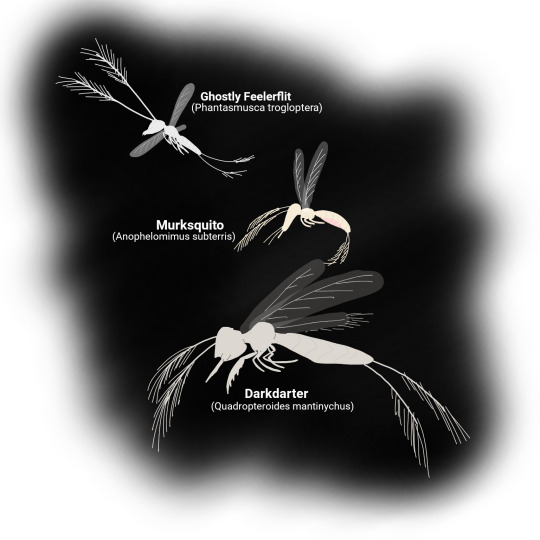
One of the ecosystem's most abundant animals are the feelerflits: the caverns' only flying animals. Descended from dipteran flies, their forebearers once did lose their wings in their initial colonization--yet over time re-evolved this ability through atavistic mutations once the caves had expanded enough to make flight advantageous again: though now, in pitch black darkness and without vision.
Feelerflits, however, managed to adapt by developing especially-hypertrophied feelers both on their antennae and their abdominal cerci, giving them the ability to detect movement both forward and behind. This, coupled by pressure sensors and long hairs on their feelers, allow them to discern their environment in flight, while olfactory and theroreceptor cells allow them to pick up thermal and chemical signals to recognize food, enemies, and conspecifics.
Most of the common feelerflits (Phantasmusca spp.) are generalist omnivores, feeding on decaying matter, shroomor spores and fungi, but some, in the abundance of resources and lack of competition, have ascended a rung in the food chain. The murksquitoes (Anophelomimus spp.) have become part-time parasites, supplementing their diet of mocklichen spores by biting larger animals such as daggoths, especially females that require additional protein in producing their eggs. Others, the darkdarters (Quadropteroides spp.) have become predators, preying on other feelerflits. With their halteres enlarged to resemble a second pair of wings but used as organs of balance instead, they are agile in the air, seizing other, smaller feelerflit species with spiny grasping forelimbs and using a sharp proboscis to pierce the bodies of their prey.
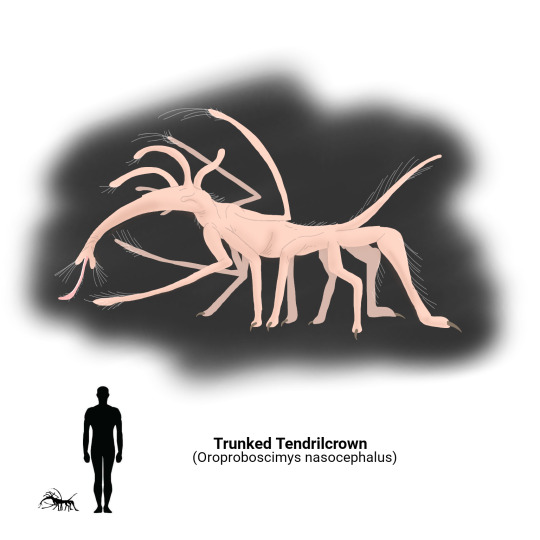
This abundance of insects, arthropods and other invertebrates has led to other unique specializations among the daggoths: the cavern systems' dominant troglofauna. Many are specialized insectivores, typically smaller species, but also some unusual outliers among the larger kinds.
One such creature is the trunked tendrilcrown (Oroproboscimys nasocephalus), a member of the cavehopper family that, unlike its other grazing kin, has adapted an elongated snout from the elongation of its lips, forming a trunk-like appendage with its mouth opening at the end, out of which emerges a long, sticky tongue equipped with small barbs, ideal for piercing through mocklichens to get at the interior, reaching into crevices to pull out rootlike mycelia, and most importantly to raid insect nests and feed on the inhabitants. Its trunklike appendage only contains its mouth, with its nostrils set far back behind the top of its head, keeping the vulnerable orfices far from reach of its biting insect prey.
Tendrilcrowns, like most other cavehoppers, are gregarious creatures that seek safety in numbers from predators like blindmutts and tendriltooths. They use their tail, atypically long for a daggoth, as a scent-marking organ to set territorial boundaries and identify related individuals. Yet, as their social behavior are merely for protection, their individual bonds are rather weak. When startled by predators, they individually flee with powerful thrusts of their leaping hind limbs, displaying little concern for their fellows whose company they only partake in to reduce the chances of individually being caught.
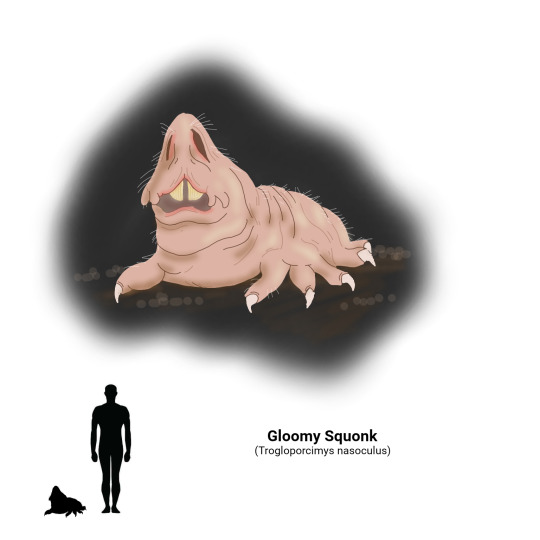
The cavehoppers may be agile and flighty creatures, but in the limited space, not all daggoths share their energetic means of movement. Some daggoths are content with a slower-paced life: especially those that live in the lower levels of the cave systems where fewer food is available and energy is better off conserved.
The gloomy squonk (Trogloporcimys nasoculus), one species of the gloomhogs in relation to the biblarodons, lives in the basement-levels of the cavern systems: where the muddy deposits gather into the large, wide chambers into a sort of underground marshland. Here, underneath the organic sludge, specialized filamentuous fungi grow in soggy, fibrous clusters, absorbing and converting the detritus back into biomass that, in turn, is the primary food of the gloomy squonk. Its ghostly eye-like orfices are in fact enlarged nostrils on its inverted, upturned snout, as it has adapted for spending much of its time wallowing in the subterranean swamps scraping off the fungi from the bottom, surfacing time and time to breathe. With larger nostrils as well as a markedly larger lung capacity, it is able to take in more air per breath, allowing it to make the most of the thin, oxygen-poor atmosphere so deep beneath the ground.
Its sluggish demeanor, large fat-storing body and glycogen-storing liver allow the gloomy squonk to survive for long periods without food, in one of the less-hospitable regions of the cavern system, where growths of its preferred forage follow irregular boom-and-bust cycles depending on how much nutrition is available from higher rungs. This, however, makes it an ideal potential meal for younger tendriltooths that may wander down lower crevices to avoid competition from aggressive and cannibalistic adults. However, while slow and typically placid, the squonk is not entirely defenseless. Its jaws, strong enough to tear fungal mycelia from rocky anchors, can also inflict a vice grip onto a would-be predator, after which it submerges into the muddy sludge in an attempt to drown its assailant.

Similarly, while some of the blindmutts became active, pouncing ambush predators, others, the cavegleaners, took on a more slow-paced lifestyle, wandering along as foragers and scavengers, picking on shroomors, insects, small daggoths and carrion, and thus alleviating competitive pressure from the tendriltooths, who now seldom consider them a threat and rarely bother attacking them.
The ridge-headed whiskersaw (Heliconasodon rubrilophus) is one such cavegleaner, often drawn to the leftover kills of tendriltooths to finish off the remains left behind once the predator is sated. Like the tendriltooth, the whiskersaw is equipped with sharp keratinous serrations on its nasal tendrils that function much like teeth. Yet now, with its foraging lifestyle, the whiskersaw now puts its false dentition to a strange use: coiling its two most prominent tendrils into tight spirals with the spines pointing outward, it then rotates them against one another as they uncoil back and forth: forming two abrading "polishers" that cleanly scrape the last residues of meat attached to bones, especially those out of reach of other predators. When uncoiled, these spiny appendages can also be inserted into hollows of bones to access the marrow, or be probed into the burrows of small prey to be extracted from their hiding spots.
The other conspicuous feature of the whiskersaw is of course the two fleshy ridges that adorn its head: the frontmost rims of which are made of highly-vascularized tissue that can be engorged and distended with specialized blood vessels to release a small amount of body heat. These are picked up by the thermoreceptors found on the nasal tendrils of other whiskersaws, in essence being used as a display organ by a species without eyes to see visual cues. Being mesothermic, like most daggoths, the display is a very energy-intensive effort in relative terms, and to the solitary creatures only means one of two things: a dominant male asserting his strength to a potential rival, or a receptive female advertising her readiness to breed. Also like the majority of other daggoths, the undeveloped but precocial young recieve minimal parental care, nursing for only a day or two before being deposited near abundant food sources conducive to their growth and survival.
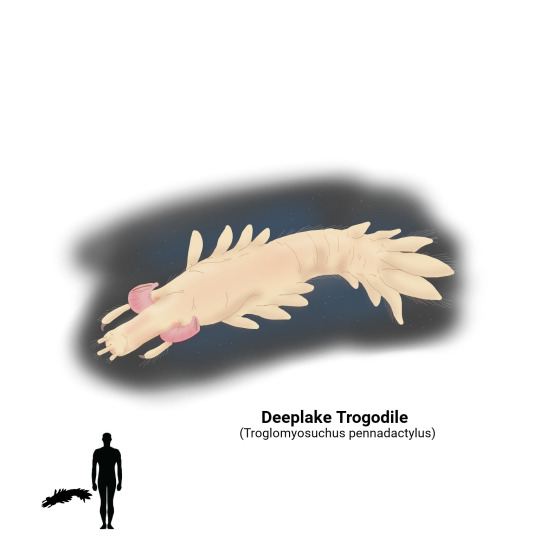
A wide variety of large fauna now thrive among the drier regions of the caverns, which, while still smaller than surface animals due to the more limited space and resources, nonetheless reach impressive sizes for a cave-dweller. But the aquatic biomes of the caverns are not left out by such trends, as some aquatic daggoths have grown quite large, in particular the deeplake trogadile (Troglomyosuchus pennadactylus) which can reach lengths of up to a meter long or more.
While the tendriltooths are the top predators of the land, the trogadiles are the apex carnivores of the underground rivers and lakes where an impressive array of organisms thrive: aquatic insects, shrish, pescopods, hampreys and tubesnouts alike, dependent on a base producer of chemosynthetic bacterial mats and aquatic meatmoss, growing in thorny fronds like animal kelp. All of these are food for the trogadile: not a picky eater, it catches food with its muscular fused nasal lobes as well as two smaller tendrils equipped with sharp claw-like points, and using its extensible snorkel-like nostrils to breathe at the surface every few minutes, sometimes lying motionless just below the surface with only its snorkels exposed, waiting to strike at unwary prey.
Their specialized limbs, modified into flipper-like paddles, undulate rhythmically to propel themselves through the water, but, conversely, now make them practically immobile on land as grown adults, entirely helpless and vulnerable if beached. Young individuals, a few inches long at birth, however can manage a clumsy scuttle across dry land, enough to be able to disperse into other bodies of water. Once grown, they are permanently waterbound, though populations can still intermingle genetically despite isolated pools being separated, due to the amphibious capabilities of the juveniles.
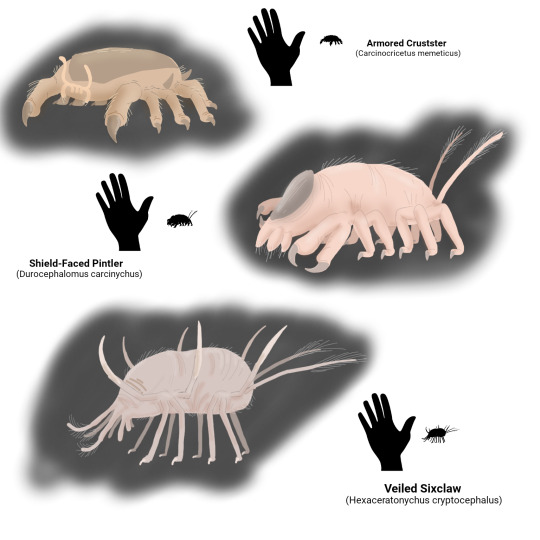
Many branches of the daggoth evolutionary family have thus produced a wide variety of some of the strangest and most alien-looking forms ever assumed by a rodent: to such an extent that many are scarcely ever recognizable as such. Many of these arise from derived lineages, but, from the gothtles, one of the most basal lineages, bizarre yet oddly familiar forms too have since emerged. These animals, in their basal forms once top predator of the caves, now find themselves at the bottom of the food chain, preyed upon by their distant kin: while some such as the xenomures adapted to flee and hide, others armed themselves with strange weaponry to to ward off and injure their enemies.
The veiled sixclaw (Hexaceratonychus cryptocephalus) is one such unusual species that, when threatened, conceals its face and sensitive nasal tendrils in a fold of thick skin as it curls itself up into a tight ball: leaving only six prominent defensive spines exposed. These long, horn-like projections are, surprisingly, actually elongated claws: attached to mobile, specialized digits, they can point in any direction to painfully stick into a predator's mouth, and, even when moving about and actively foraging, the sixclaw bears its weaponry in arms, raised above and behind its body to make it difficult to grab. Able to move together, they can pinch the tendrils and toes of an enemy, hard enough to draw blood, even if successfully picked up.
This ability for the digits to grip in junction has been put to good use by some species. The shield-faced pintler (Durocephalomus carcinychus) specifically has hypertrophied the first two pairs of its digits to use almost as grasping pincers, able to partly oppose and each equipped with a large, retractable claw. These serve it good use in excavating burrows, tearing apart food, defending itself and, most remarkably, used in intraspecific combat. Males can be up to twice as big as a female, and sport greatly enlarged claws and a larger keratinous facial shield that, while used in the females merely to protect their faces while burrowing, are defenses for males when they fight over territory, mates and resources, lifting each other up and tossing each other away as they tussle for dominance, with the losing combatant occasionally losing a few digits in the process.
These defenses, armor and burrowing abilities all reach their peak in the armored crustster (Carcinocricetus memeticus), a smaller and more placid relative of the pintlers that has evolved a more compact body and a single enlarged shield covering most of its back that, with its sharp-spined edges and smooth curved shape, makes it resistant to all but the most specialized of predators. Its powerful front claws are primarily used for digging, while its back, reinforced by a thick and sturdy spine with multiple interlocking vertebral processes, allow it great strength for its size, able to use it for leverage to wedge itself under large stones or into crevices, both to make itself inaccessible to enemies trying to fish it out of its hiding spots, as well as access small invertebrate prey taking shelter underneath.
#speculative evolution#speculative biology#spec evo#speculative zoology#hamster's paradise#biome post
129 notes
·
View notes
Text

my friend and i are weirdos (affectionate)
#yogscast xephos#xephos#yogscast#yogscast honeydew#honeydew#art vibes#very silly content for everyone#in my mine they are at university#xephos is taking some post grad biomed thing#and honeydew is a mature aged student doing social sciences#no one understand how they are friends
21 notes
·
View notes
Text
I made a uquiz if anyone is interested
30 notes
·
View notes
Text
Vash would have so much fun in the snow. The moment he found out it can stick too it would be all over. He would be making little snowman versions of all his friends and have all their little stick arms holding hands regardless of what they’re doing or what mission they’re on
#trigun#vash the stampede#I like to imagine his reactions to stuff if the planet actually had other biomes other than just desert#ie I think he would love swimming sm#my posts
26 notes
·
View notes
Text
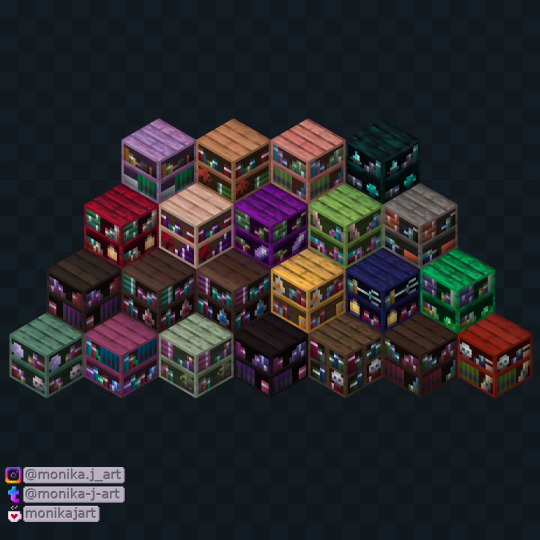
Now that I have a reason to start over in some aspects, I decided to redo my mod wood bookshelf textures !! the old set was kind of dull looking and included a wood I've scrapped and replaced (feature of that new one coming soon !!!)
#monika evil deeds#my art#biome expanse#I don't think I ever actually posted the first batch ?#but like whatever#minecraft#minecraft mods#artists on tumblr#mineblr#art#pixel art#digital art#artwork#texture#ohhh shir you guys finally get to see the fucked up order I organize these in#minecraft texture#minecraft mod#minecraft villager
206 notes
·
View notes